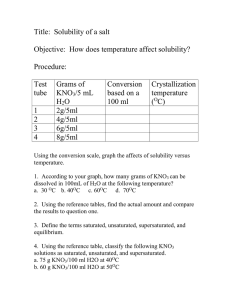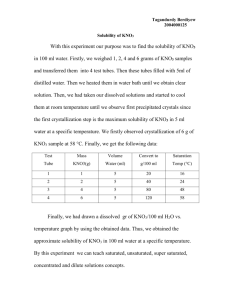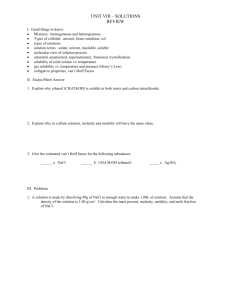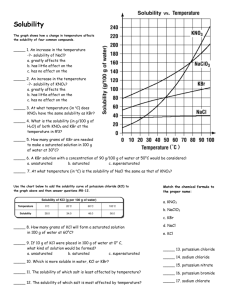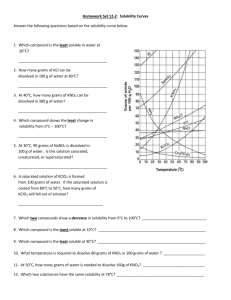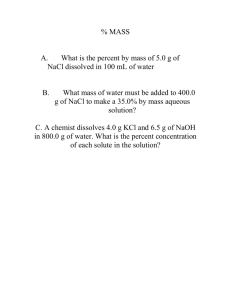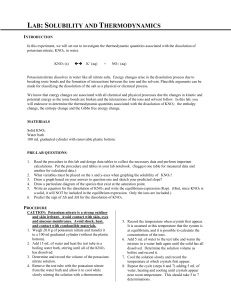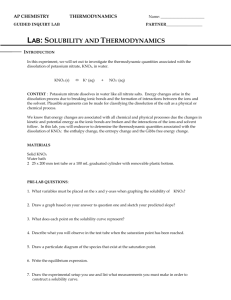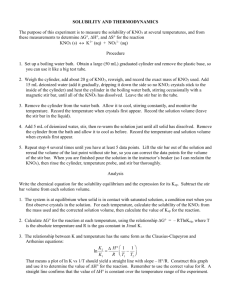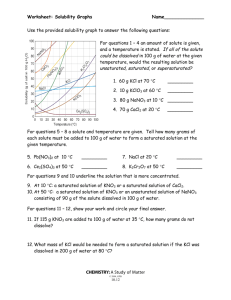Problem #14 A solution contains 32 g of KNO3
advertisement
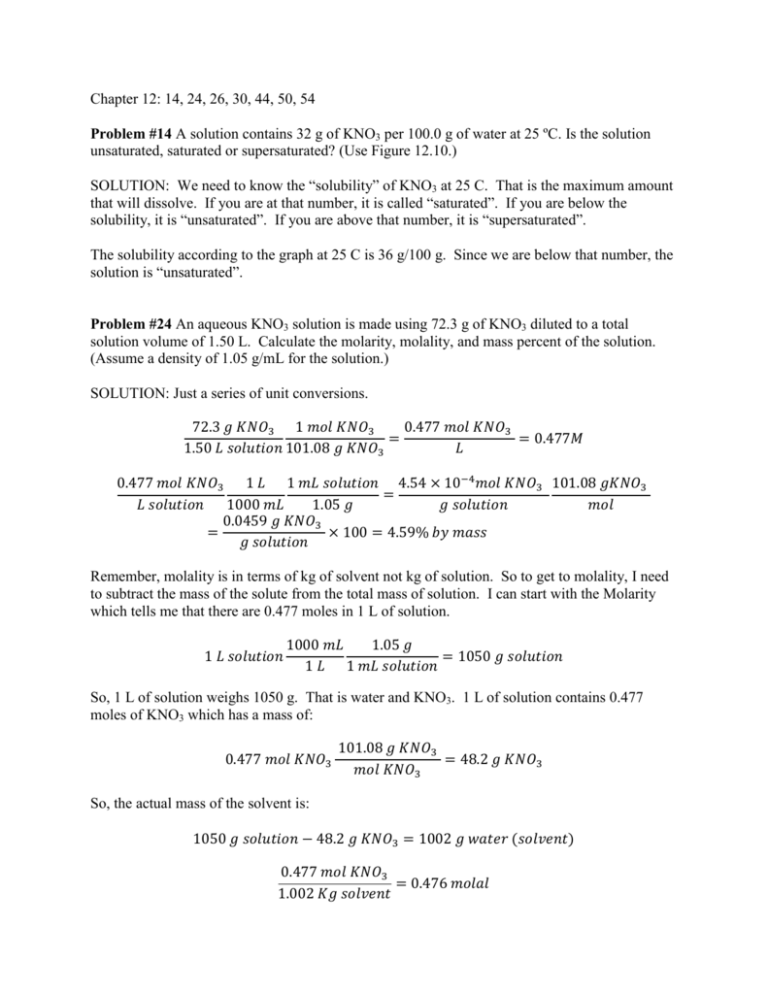
Chapter 12: 14, 24, 26, 30, 44, 50, 54 Problem #14 A solution contains 32 g of KNO3 per 100.0 g of water at 25 ºC. Is the solution unsaturated, saturated or supersaturated? (Use Figure 12.10.) SOLUTION: We need to know the “solubility” of KNO3 at 25 C. That is the maximum amount that will dissolve. If you are at that number, it is called “saturated”. If you are below the solubility, it is “unsaturated”. If you are above that number, it is “supersaturated”. The solubility according to the graph at 25 C is 36 g/100 g. Since we are below that number, the solution is “unsaturated”. Problem #24 An aqueous KNO3 solution is made using 72.3 g of KNO3 diluted to a total solution volume of 1.50 L. Calculate the molarity, molality, and mass percent of the solution. (Assume a density of 1.05 g/mL for the solution.) SOLUTION: Just a series of unit conversions. Remember, molality is in terms of kg of solvent not kg of solution. So to get to molality, I need to subtract the mass of the solute from the total mass of solution. I can start with the Molarity which tells me that there are 0.477 moles in 1 L of solution. So, 1 L of solution weighs 1050 g. That is water and KNO3. 1 L of solution contains 0.477 moles of KNO3 which has a mass of: So, the actual mass of the solvent is: Problem #26 To what volume should you dilute 125 mL of an 8.00 M CuCl2 solution so that 50.0 mL of the diluted solution contains 5.9 g CuCl2? SOLUTION: There’s a number of different ways to do this. Whatever method you use requires the units of the undiluted solution to be the same as the diluted solution. So, I want the diluted solution to have a concentration of 0.878 M Problem #30 Lead is a toxic metal that affects the central nervous system. A Pb-Contaminated water sample contains 0.0011% Pb by mass. How much of the water (in mL) contains 150 mg of Pb? (Assume a density of 1.0 g/mL.) SOLUTION: Problem #44 A solution contains naphthalene (C10H8) dissolved in hexane (C6H14) at a concentration of 10.85% naphthalene by mass. Calculate the vapor pressure at 25 ºC of hexane above the solution. The vapor pressure of pure hexane at 25 ºC is 151 torr. SOLUTION: Vapor pressure of a solution means, say “Hola” to Raoult! We have the concentration in %by mass, we need to convert this to mole fraction This means that every 100 g of solution contains 10.85 g naphthalene and 89.15 (100 g – 10.85 g) of hexane. Problem #50 An ethylene glycol solution contains 21.2 g of ethylene glycol (C2H6O2) in 85.4 mL of water. Calculate the freezing point and boiling point of the solution. (Assume a density of 1.00 g/mL for water.) SOLUTION: It’s all about molality here ( ) ( ) Problem #54 An aqueous solution containing 35.9 g of an unknown molecular (nonelectrolyte) compound in 150.0 g of water was found to have a freezing point of -1.3 ºC. Calculate the molar mass of the unknown compound. SOLUTION:
